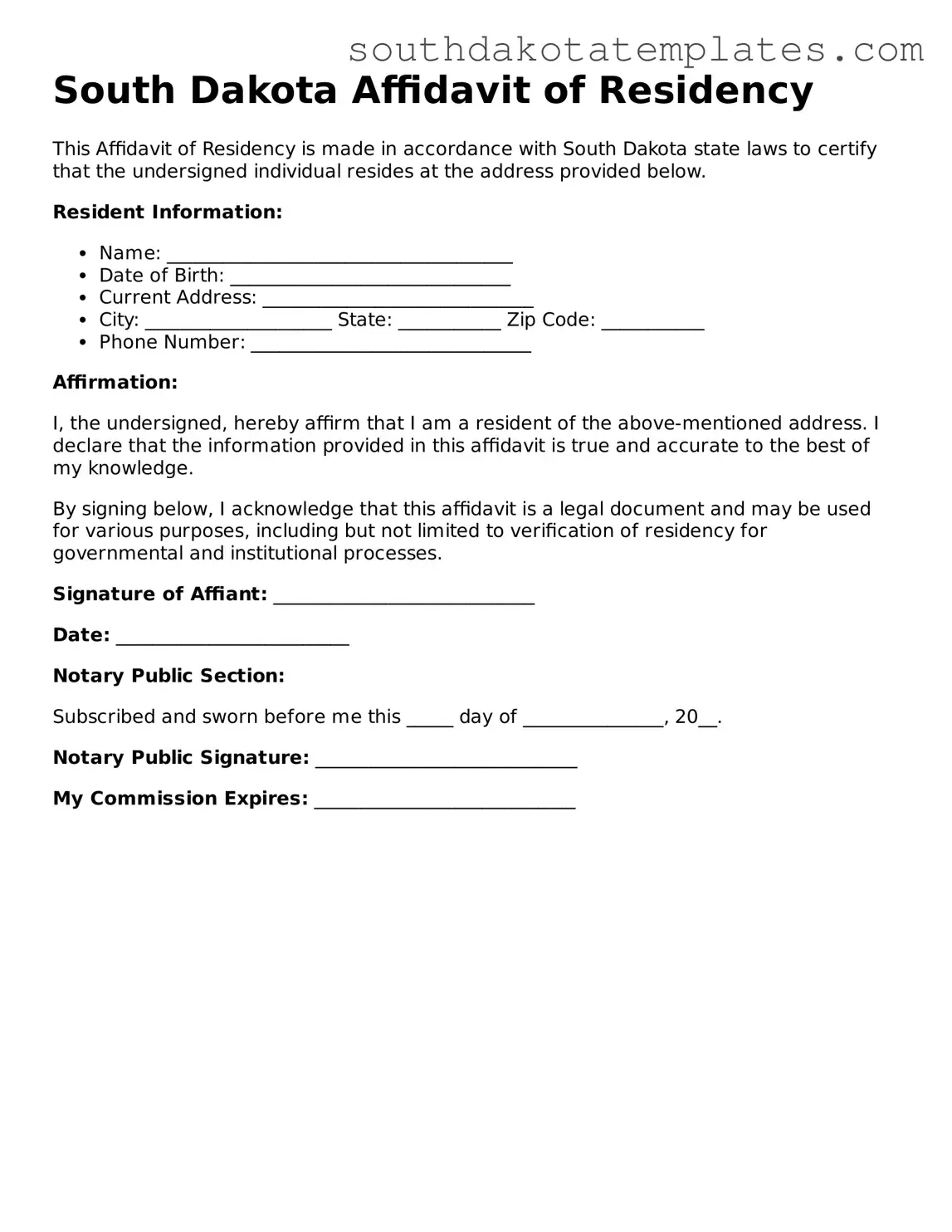Free South Dakota Affidavit of Residency Document
The South Dakota Affidavit of Residency form is a legal document used to verify an individual's residency within the state. This form is often required for various purposes, such as obtaining a driver's license or registering to vote. To ensure compliance and accuracy, it is essential to fill out this form correctly.
For assistance with completing the South Dakota Affidavit of Residency form, click the button below.
Get Affidavit of Residency
